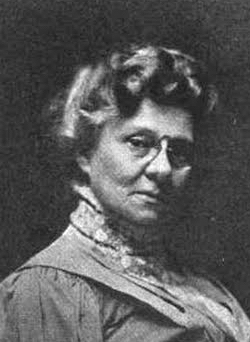Whittier House (Jersey City, New Jersey) facts for kids
| Formation | 1894 |
|---|---|
| Founder | Cornelia Foster Bradford |
| Purpose | Social reform |
| Location |
|
Whittier House was a special kind of community center in Jersey City, New Jersey. It was part of a movement called the settlement movement. This movement aimed to help people in crowded city areas.
Whittier House wanted to improve people's lives and inspire them. It worked with anyone trying to make society better. It opened on December 20, 1893. Then, on May 14, 1894, it officially became an organization and moved to 174 Grand Street.
Cornelia Foster Bradford founded Whittier House. It was named after the poet John Greenleaf Whittier. This was the very first settlement house in New Jersey. Records about Whittier House from 1894 to 1974 are kept at the New Jersey Historical Society.
Contents
History of Whittier House
Whittier House started on May 14, 1894. It grew from social work that Cornelia Foster Bradford began in December 1893. She started in a small room in a building called the People's Palace.
Whittier House was created for these main reasons:
- To build friendships and help people in the community. They wanted to improve everyone's physical, mental, and moral well-being. They did this through clubs, classes, and other groups.
- To have a house where workers could live and study community problems up close. This house was also a meeting place for clubs, classes, and fun events. It helped the community grow in social, civic, and moral ways.
- To work with churches, schools, charities, and worker groups. They cooperated with any organization trying to make social conditions better.
The Neighborhood It Served
The area around Whittier House was very busy and had many different people. About 75% of the people were from Slavic countries. The other 25% included people from Ireland, Germany, African Americans, Russians, Poles, and Italians.
Many men in the neighborhood worked in factories that made sugar, soap, or tobacco. Others worked on the docks. The area was very poor and people often moved in and out. It was different from other busy city areas like the lower East Side in New York City.
What Whittier House Did
Whittier House was the first settlement house in New Jersey. It helped both the city and the state. It worked with the College Settlements Association to study housing conditions in Jersey City. This led to the creation of the State Tenement House Commission. The first inspectors for this commission lived at Whittier House.
The house also helped start other important groups, such as:
- The State Consumers' League, which had its office there.
- The State Neighborhood Workers Association.
- The Hudson County Tuberculosis Sanitarium, which helped people with lung disease.
Workers from Whittier House often spoke to lawmakers. They were also part of groups like the State Board of Charities and the Child Labor Committee. They also joined the Pure Food Committee and the Children's Protective Alliance.
Whittier House was known for working closely with state and city governments. It offered many activities, including:
- Classes for learning skills like cooking, sewing, and hat-making.
- An art class.
- A kindergarten for young children.
- A boys' association.
- Social, educational, and music programs.
Many local groups held their meetings at Whittier House. These included the Organized Aid Society of Jersey City and the Jersey State Legal Society. Whittier House was involved in almost every effort to improve life in the city. This included working with groups like the The Salvation Army and city departments.
Whittier House was the first to establish several important services:
- The first free kindergarten in the city. It later became part of the public school system.
- The first district nurse, which led to the city's own nursing service.
- The first public playground, which was the only one for many years.
In 1896, the mayor asked two residents to help investigate a large fire. They also helped give money to the fire victims. In 1907, Whittier House stopped running its own medical clinic. Instead, it worked with city clinics. It also gave its library to the city, though the library stayed in the building.
Its legal aid department, started in 1894, was always very important. It helped organize the Jersey City Society for Prevention of Cruelty to Children. It also helped create the Organized Aid and the City Betterment League. The Neighborhood Council from Whittier House spoke to the mayor and school board. They helped get a playground for their area and did other important social work.
The People Behind Whittier House
The settlement was named after the famous poet, John Greenleaf Whittier. The house's motto came from his words: "He serves Thee best who loveth most. His brothers and Thy own." This means that helping others is the best way to serve.
Cornelia Foster Bradford was the founder and main leader. She had seven other people living at the house helping her. About 70 other people volunteered their time. Bradford also spent a lot of time giving talks and writing about social work.
A Board of Directors helped run Whittier House. This board included men and women from different parts of New Jersey. An Auxiliary group, made up of women from Jersey City, also helped out.


